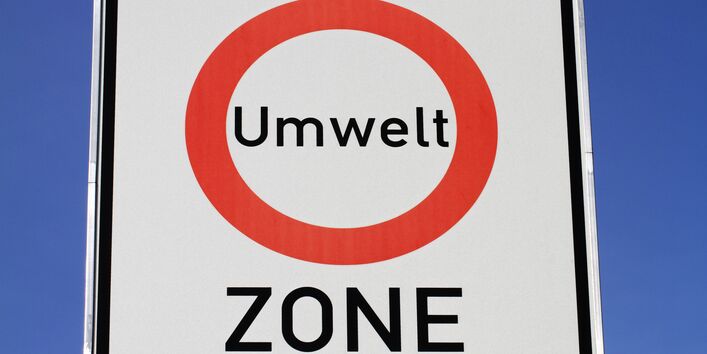Limit values on particulate matter have been in effect in EU law since 1 January 2005. A yearly average of 40 microgrammes per cubic metre (µg/m 3 ) and a daily average of 50 μg/m 3 have been set for particulate matter smaller than 10 micrometres (PM 10 ). The daily average may not be exceeded on more than 35 days per calendar year. Many German cities have recorded a significantly higher rate of exceedences above the tolerated limit.
Since commercial vehicle traffic is a major factor contributing to air pollution by particulate matter in urban areas, a number of Germany’s cities have designated low emission zones (LEZ) whose purpose is to improve the air quality within these zones and thus protect public health.
Only vehicles bearing a sticker for the low emission zone may enter the zone. In a first phase, bans apply to vehicles without a sticker. In the course of the next few years, this gradually applies to vehicles that have either a red or yellow sticker. Determination of appropriate sticker is based on the tax class and EURO standard recorded in the car registration book, and which is regulated by the labelling regulation in the 35th Ordinance for the Implementation of the Federal Immission Control Act (35. BImSchV).
The effectiveness of a low emission zone depends on a range of factors. In the first stage, when comparatively few vehicles without a sticker are banned, a reduction of about two percent relative to the yearly average and roughly 5 exceedence days fewer can be expected. In the next stage, when only vehicles with a green sticker are allowed access, air quality in inner cities becomes significantly better: 10 to 12% less particulate matter, equivalent to 20 fewer exceedence days.
The German Federal Environment Agency (Umweltbundesamt) compiles the data reported by federal states and municipalities on their low emission zones. The individual municipalities are responsible for accuracy and up-to-dateness of data.
